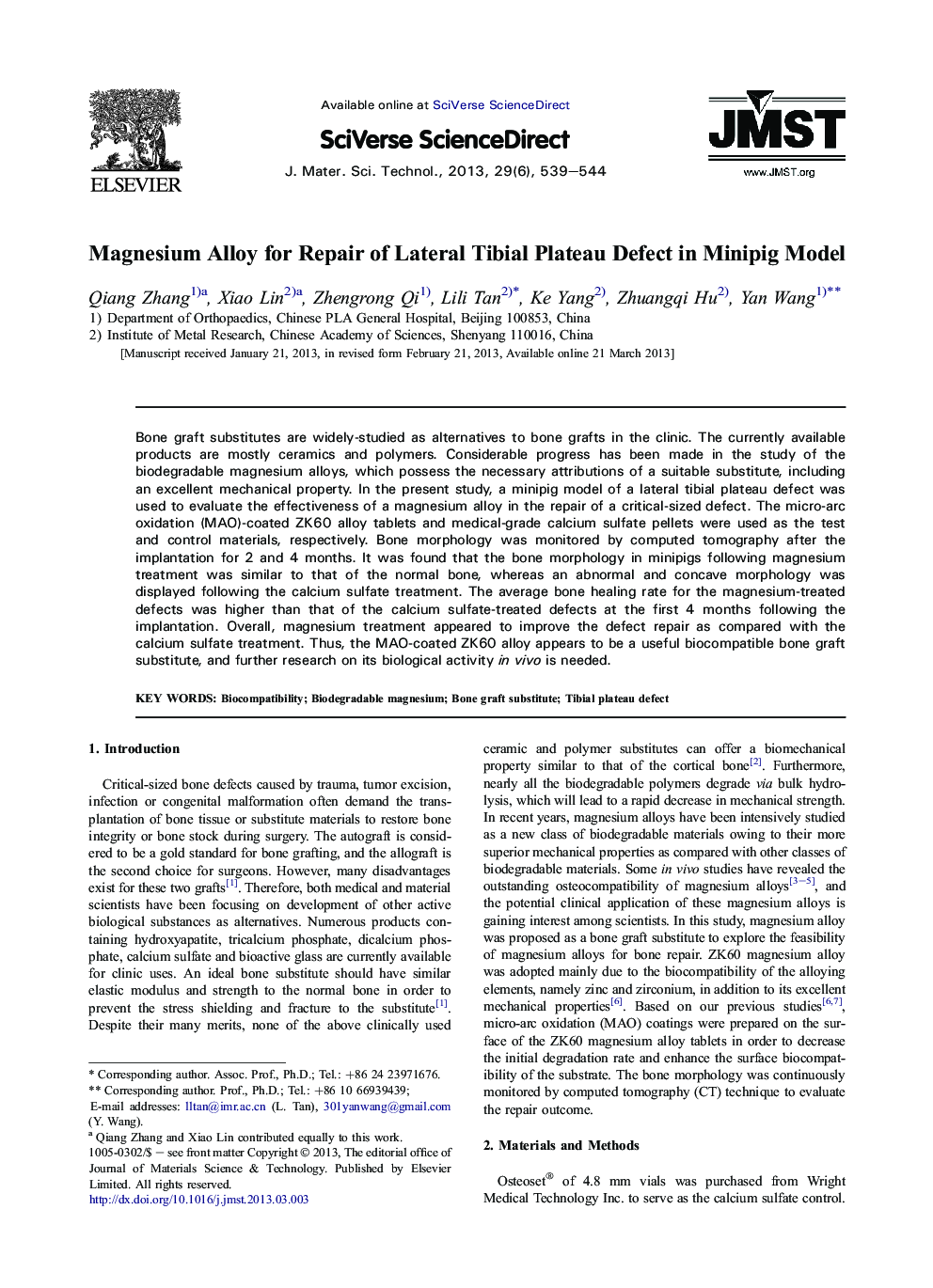| Article ID | Journal | Published Year | Pages | File Type |
|---|---|---|---|---|
| 1556432 | Journal of Materials Science & Technology | 2013 | 6 Pages |
Bone graft substitutes are widely-studied as alternatives to bone grafts in the clinic. The currently available products are mostly ceramics and polymers. Considerable progress has been made in the study of the biodegradable magnesium alloys, which possess the necessary attributions of a suitable substitute, including an excellent mechanical property. In the present study, a minipig model of a lateral tibial plateau defect was used to evaluate the effectiveness of a magnesium alloy in the repair of a critical-sized defect. The micro-arc oxidation (MAO)-coated ZK60 alloy tablets and medical-grade calcium sulfate pellets were used as the test and control materials, respectively. Bone morphology was monitored by computed tomography after the implantation for 2 and 4 months. It was found that the bone morphology in minipigs following magnesium treatment was similar to that of the normal bone, whereas an abnormal and concave morphology was displayed following the calcium sulfate treatment. The average bone healing rate for the magnesium-treated defects was higher than that of the calcium sulfate-treated defects at the first 4 months following the implantation. Overall, magnesium treatment appeared to improve the defect repair as compared with the calcium sulfate treatment. Thus, the MAO-coated ZK60 alloy appears to be a useful biocompatible bone graft substitute, and further research on its biological activity in vivo is needed.
